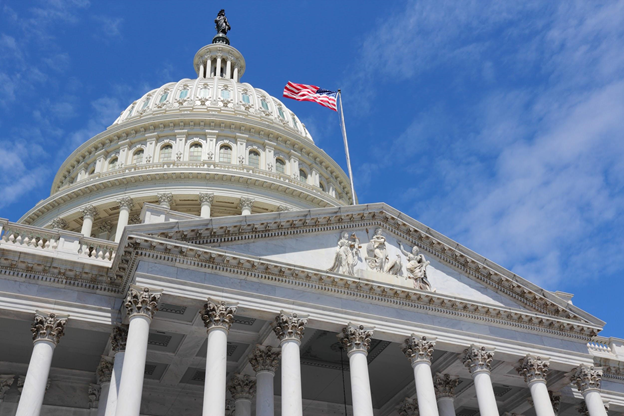Signed into law late last year, the SECURE Act aims to incentivize small businesses to offer tax-advantaged retirement plans and workers to sign up for them. An acronym for ‘Setting Every Community Up for Retirement Enhancement’, the SECURE Act not only makes it easier for employees to save but also for employers to offer 401(k) plans to their workforce.
What is the SECURE Act?
America has a retirement crisis. According to data from the National Institute of Retirement Security, only one out of every five working Americans have more than a year’s salary saved in a retirement account. To make matters worse, more than half of the nation’s working class has nothing saved in a 401(k), IRA, or another type of retirement plan.
With so few people holding significant retirement savings, the federal government sprang into action last year in hopes of encouraging more workers to save and more employers to offer sponsored plans through the workplace.
For savers, the SECURE Act introduced a number of benefits. For starters, it pushed back required minimum distributions (RMDs). 401(k) or IRA plan holders previously needed to begin taking distributions at the age of 70.5. Under the new law, those RMDs can be delayed until age 72. Additionally, 401(k) account holders will be able to include annuities in their portfolios instead of just mutual funds. Plus, new parents can tap their 401(k) accounts for up to $5,000 for child care expenses without incurring the early withdrawal penalty.
How Does the SECURE Act Affect Small Businesses?
While individual savers are reaping benefits from the SECURE Act, small businesses are the ones who stand to truly benefit. Providing employer-sponsored retirement plans to workers is a perk many job seekers hold in high regard, but the costs of setting up 401(k) plans are often too high for small and mid-size businesses to make it worthwhile.
However, under the SECURE Act, employers can take home extra tax credits and ease the burden of running a retirement plan through MEPs.
Tax Credits for Setting up New 401(K) Plans
Encouraging retirement saving has been a long-term goal of the federal government, but employers were often left out in the cold. Small business owners were offered a tax credit for setting up a 401(k) plan for their workers, but the credit maxed out at 50% or $500, a paltry sum for a business owner trying to keep costs down.
Now, that tax credit has been greatly enhanced. Under the new law, the maximum tax credit is $5,000 and employers can take up to three years to use it. Employers must meet the following requirements for eligibility:
– Must have 100 or fewer employees who earned at least $5,000 in wages in the last year.
– Must have at least one non-highly compensated employee participating
– Cannot have “substantially” the same employees enrolling in the new plan as were previously enrolled in an older plan
Additionally, part-time workers are now eligible for employer-sponsored plans provided they worked at least 1000 hours in the previous year or 500 hours in each of the three previous years.
Tax Credits for Offering Automatic Enrollment
Social researchers say inertia is a huge cause for why most employees don’t save for retirement. Someone contributing $0 to a retirement account is likely to continue contributing $0, just like someone contributing 5% of their salary can be expected to continue contributing that same 5% each year.
In order to get the ball rolling for these folks who have yet to sign up, many companies offer automatic enrollment in the program – you’re in as soon as you’re hired and must opt-out of the program if you don’t want to participate. Most workers will choose not to opt-out and will contribute to their 401(k) without missing the money.
The federal government wants to use this inertia to its advantage and encourage employers to offer automatic enrollment policies. Consequently, an additional $500 tax credit is now on the table for employers featuring automatic enrollment in their new or currently existing sponsored retirement plans.
Easing Rules to Establish Multiple Employer Plans (MEPs)
Another benefit of the SECURE Act is the easing of restrictions surrounding Multiple Employer Plans (MEPs). An MEP is a retirement plan that’s shared by several companies, enabling them to split both the costs involved in running it and the work needed to open and maintain it.
Beginning on January 1, 2021, employers in completely unrelated fields will be able to combine their retirement plans into a single entity. While MEPs are far from a new creation, they were previously only available to companies that worked in the same industry. Starting next year though, those restrictions on related industries will be erased and MEPs will be opened for all types of companies to join together.
MEPs can also ease the time and cost burdens of setting up a plan but be cautious. A MEP can mean you lose control over which options are offered, which can hinder flexibility.
What Does This Mean for Your Small Business?
If you’ve been meaning to set up a small business retirement plan for your employees but have found the costs to be prohibitive, now may be the time to act. The additional tax credits make setting up a new plan easier than ever, plus your workers will greatly appreciate an increased opportunity to save.
As always, be sure to consult with a financial advisor before opening up any type of retirement plan in order to not only choose the right one but to maximize the money you receive from these new tax credits.
Bartley Financial, the SECURE Act, and Your Small Business Retirement Plan
Retirement plans can benefit your employees, your business, and you, especially with the new small business incentives offered in the SECURE Act. However, to maximize these benefits and ensure that your small business retirement plan matches your goals and your cash flow, it can be helpful to work with a financial advisor.
Robert Bartley, the founder and owner of Bartley Financial, grew up working many hours at his family’s restaurant, saved the money he earned, and started to invest. He felt he wasn’t getting the service he needed from his CPA, who lacked an aptitude for suggesting creative solutions. In fact, the more involved he became in his family’s business, the more he realized that, behind the scenes, critical information about the business was ending up in data silos, headed by financial, insurance and law professionals unwilling or incapable of coordinating with one another. Convinced that there had to be a better way to manage his personal and family business’ finances, he went to school and pursued the professional designations of CPA and CFP.
Now, Robert uses his personal business experience and financial acumen to guide other business owners in Massachusetts and New Hampshire toward their most successful futures. The Bartley Financial team (which includes two CPAs) coordinates your business and personal goals and, in the process, enhances your business’ attractiveness to employees (and buyers when you want to sell), improves its tax and cash flow strategies, tackles your company’s administrative needs, and coordinates a comprehensive approach with your business’ other financial professionals.
Finally, Bartley Financial is a fee-only fiduciary. Fiduciaries are the only professional financial advisors mandated to put your and your business’s financial needs ahead of their own. Bartley’s fee-only structure ensures that your costs are forecastable and unencumbered by commissions or other hidden, fluctuating, and unpredictable charges. You can be sure that Bartley advisors will have top-notch customer service at the top of their priority lists.


